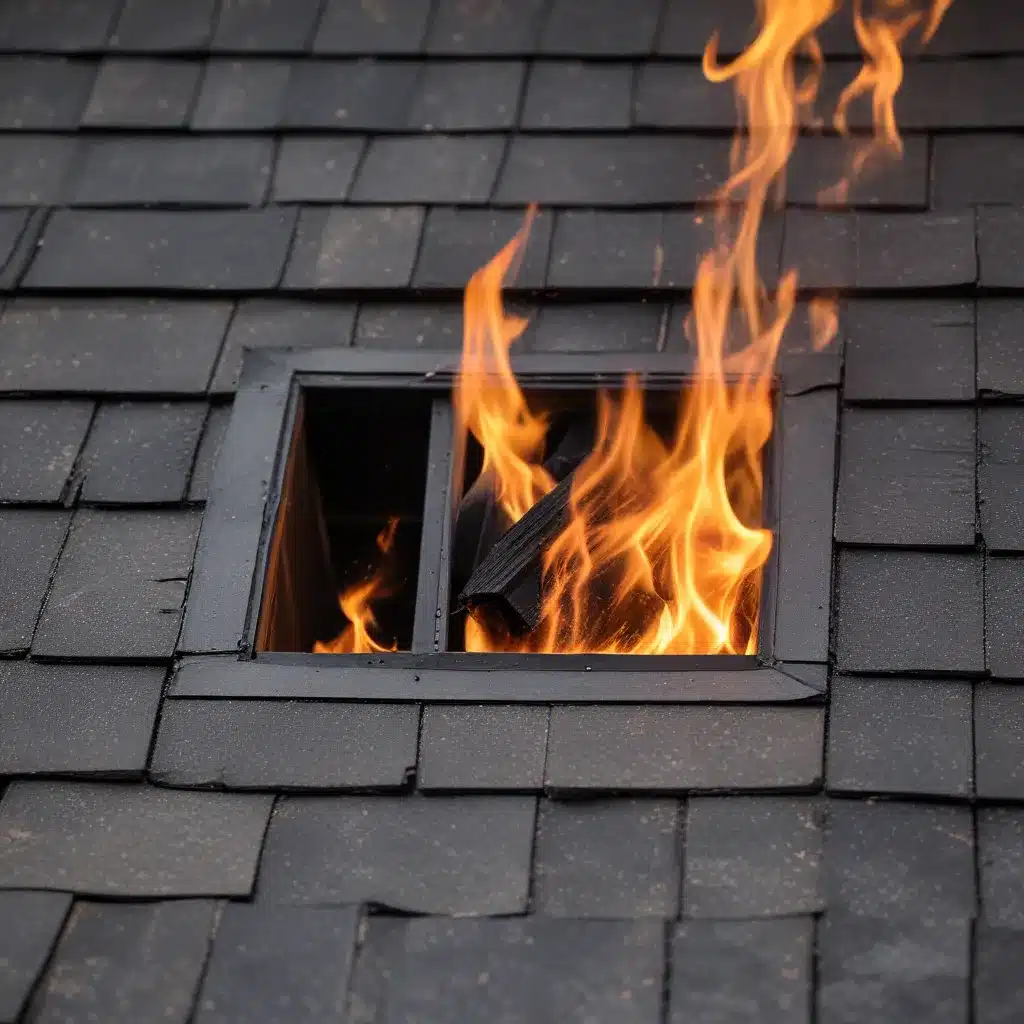
Understanding Roof Ventilation and Its Role in Fire Safety
Proper roof ventilation is a critical component of overall home fire safety. When designed and installed correctly, a well-ventilated roof can significantly reduce the risk of a catastrophic fire by preventing the buildup of heat, moisture, and flammable materials. As a seasoned roofing professional, I’ve witnessed firsthand how improper or inadequate ventilation can compromise a home’s resilience against the threat of wildfires and other fire-related hazards.
In this comprehensive guide, we’ll explore the importance of roof ventilation, discuss the relationship between ventilation and fire safety, and provide practical tips to help homeowners mitigate these risks in their homes.
The Importance of Roof Ventilation
Roof ventilation serves several vital functions that contribute to the overall health and longevity of a home:
-
Temperature Regulation: Proper ventilation allows hot air to escape the attic space, preventing the buildup of heat that can lead to increased energy costs, decreased comfort, and even damage to the roofing materials and structure.
-
Moisture Control: Adequate ventilation helps remove excess moisture from the attic, which can otherwise lead to mold, mildew, and rot, compromising the structural integrity of the roof and creating potential health hazards.
-
Fire Hazard Reduction: Well-designed roof ventilation systems can effectively disrupt the flow of air and limit the spread of flames, minimizing the risk of a devastating fire.
The Relationship Between Roof Ventilation and Fire Safety
The connection between roof ventilation and fire safety is a critical one. Improper or inadequate ventilation can create an environment that is more susceptible to the ignition and rapid spread of fires, putting the entire home at risk.
Ventilation and Ember Intrusion
During a wildfire or other fire event, embers can be carried by the wind and driven into attic spaces through improperly sealed or protected vents. These embers can then ignite flammable materials within the attic, leading to a cascading fire that can quickly engulf the entire home.
Ventilation and Fire Propagation
Poorly ventilated attic spaces can also contribute to the propagation of fires. Stagnant, hot air trapped in the attic can act as a chimney, funneling flames and superheated gases upward, allowing the fire to spread rapidly through the roof system and into the rest of the structure.
Ventilation and Firefighter Safety
Effective roof ventilation can also play a crucial role in the safety of firefighters responding to a blaze. By providing a clear path for heat and smoke to escape, ventilation systems can improve visibility and reduce the risk of flashovers or backdrafts, which can threaten the lives of those working to extinguish the fire.
Mitigating Roof-Related Fire Risks
To enhance the fire safety of your home, it’s essential to address the vulnerabilities of your roof and implement proactive measures to reduce the risk of ignition and fire propagation. Here are some key strategies to consider:
Roof Materials and Design
When it comes to fire safety, the choice of roofing materials and the overall design of the roof system are crucial factors to consider. Opt for fire-resistant or noncombustible roofing materials, such as metal, tile, or asphalt shingles with a Class A fire rating. Avoid using combustible materials like wood shakes or shingles, which can easily ignite and contribute to the spread of a fire.
Additionally, ensure that your roof design includes proper ventilation systems, such as ridge, soffit, and gable vents, that are specifically engineered to resist ember intrusion and provide effective air circulation.
Vent Protection and Maintenance
Protecting your roof vents from embers and flames is a critical step in mitigating fire risks. Install mesh or screened coverings over all vents to prevent the entry of airborne embers. Regular maintenance, such as cleaning and inspecting vents, is also essential to ensure they remain unobstructed and functioning effectively.
Gutter and Eave Maintenance
Regularly cleaning your gutters and the areas around your home’s eaves can significantly reduce fire risks. Accumulated leaves, twigs, and other debris in gutters and along eaves can provide fuel for embers, leading to the ignition of the home. Ensure that your gutters are clear of flammable materials and consider installing noncombustible gutter covers for additional protection.
Vegetation Management
The vegetation surrounding your home can also play a role in its vulnerability to fire. Maintain a well-managed, fire-resistant landscape by regularly pruning trees, removing dead or dry vegetation, and creating a defensible space around your home. This can help prevent the spread of flames and limit the potential for embers to ignite nearby combustible materials.
Roof Inspection and Maintenance
Periodic roof inspections and proactive maintenance are crucial for maintaining fire safety. Look for any cracks, gaps, or other vulnerabilities in the roof system that could allow the entry of embers or the spread of flames. Address any issues promptly, such as repairing or replacing damaged roofing materials or sealing openings around vents, chimneys, and other roof penetrations.
Homeowner Education and Emergency Preparedness
Educating homeowners about the importance of roof ventilation and fire safety is a vital aspect of risk mitigation. Encourage your clients to stay informed about local fire risks, to develop emergency evacuation plans, and to implement the necessary home hardening strategies to protect their properties.
By working closely with homeowners and providing them with comprehensive guidance, you can help them make informed decisions and take proactive steps to enhance the fire safety of their homes.
Conclusion
Roof ventilation is a critical component of overall home fire safety, and as roofing professionals, we play a crucial role in ensuring that our clients’ homes are well-protected against the threat of catastrophic fires. By understanding the relationship between ventilation and fire safety, and by implementing proven strategies to mitigate roof-related risks, we can help homeowners in Northampton and beyond safeguard their properties and their loved ones.
Remember, the Roofers in Northampton team is always here to provide expert guidance and support. Together, we can work to create a more fire-resilient community, one roof at a time.

